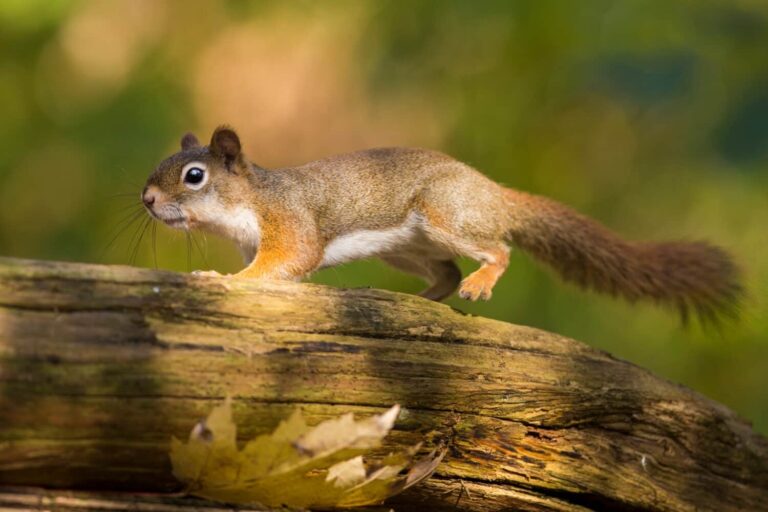Squirrels are among the most common and fascinating mammals you’ll see in parks, backyards, and forests. Their quick movements, acrobatics, and bushy tails make them a favorite of wildlife watchers. But have you ever wondered about the squirrel lifespan? How long do squirrels typically live, and what factors affect their longevity?
In this article, we’ll explore the average lifespan of squirrels in the wild versus in captivity, the different lifespans of common squirrel species, and tips for supporting their survival in your area.
Average Squirrel Lifespan: Wild vs. Captivity
Squirrels generally live much longer in captivity than in the wild, mainly due to reduced threats from predators, accidents, and harsh weather.
- In the Wild: The average squirrel lifespan in the wild is about 6 to 12 years, depending on the species and environment. Many young squirrels don’t survive their first year due to predation and other risks.
- In Captivity: In controlled environments like wildlife sanctuaries or as pets (where allowed), squirrels can live up to 15 to 20 years thanks to consistent food, shelter, and veterinary care.
Squirrel Lifespan by Species
Different squirrel species have varying lifespans. Below are some of the most common types of squirrels and how long they typically live:
Eastern Gray Squirrel
One of the most common in North America, the eastern gray squirrel has a wild lifespan of 6–12 years, with some individuals in captivity reaching 20 years.
Red Squirrel
Smaller and more territorial than gray squirrels, red squirrels live about 5–8 years in the wild.
Fox Squirrel
The largest tree squirrel species in North America, fox squirrels typically live around 8–12 years in the wild.
Flying Squirrel
Known for gliding between trees, flying squirrels have a shorter lifespan of around 5–6 years in the wild but can live longer under human care.
Factors That Affect Squirrel Lifespan
Several factors play a role in how long a squirrel lives:
Predators
Hawks, owls, snakes, foxes, and domestic cats are natural predators of squirrels and contribute significantly to early mortality.
Food Availability
A steady supply of nuts, seeds, fruits, and vegetation helps squirrels stay healthy and survive winters.
Habitat Quality
Areas with abundant trees and minimal human disturbance provide better shelter and nesting sites, increasing survival chances.
Accidents and Disease
Cars, harsh winters, falls, and diseases like squirrel pox can all shorten a squirrel’s life expectancy.
How to Support Squirrel Lifespan in Your Yard
If you enjoy watching squirrels and want to help them thrive, here are a few simple steps:
- Provide squirrel feeders with safe, nutritious food such as unsalted nuts and seeds.
- Plant native trees and shrubs to offer natural shelter and food sources.
- Keep cats and dogs under control to reduce predation risk.
- Avoid using toxic pesticides or chemicals that can harm wildlife.
Final Thoughts
The squirrel lifespan can vary widely depending on species, environment, and circumstances. While many wild squirrels live only a handful of years due to natural dangers, they are remarkably resilient creatures. With proper habitat and care, they can live much longer and continue to charm us with their antics.
Understanding how long squirrels live gives us a greater appreciation of these energetic animals and inspires us to help protect their habitats for future generations.



